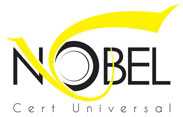The Quality management principles underlying the ISO 9000 family of standards (of which the ISO 10000 series form a part) emphasize the importance of human resource management and the need for appropriate training. They recognize that customers are likely to both respect and value an organization’s commitment to its human resources and its ability to demonstrate the strategy used to improve the competence of its personnel.
Personnel at all levels should be trained to meet the organization’s commitment to supply products of a required quality in a rapidly changing market place where customer requirements and expectations are increasing continuously.
This International Standard provides guidelines to assist organizations and their personnel when addressing issues related to training. It may be applied whenever guidance is required to interpret references to “education“ and “training“ within the ISO 9000 family of quality assurance and quality management standards. Any references to “training“ in this document includes all types of education and training.
An organization’s objectives for continual improvement, including the performance of its personnel, might be affected by a number of internal and external factors including changes in markets, technology, innovation, and the requirements of customers and other stakeholders. Such changes may require an organization to analyse its competence-related needs. Figure 1 illustrates how training could be selected as an effective means of addressing these needs. The role of this International Standard is to provide guidance that can help an organization to identify and analyse training needs, design and plan the training, provide for the training, evaluate training outcomes, and monitor and improve the training process in order to achieve its objectives. It emphasizes the contribution of training to continual improvement and is intended to help organizations make their training a more effective and efficient investment.
Benefits of ISO 10015:1999
- It is easily understood by companies familiar with ISO 9001:2008 quality management systems being based on the process approach.
- It can also be used by organizations that have not implemented ISO 9001:2008, but have instead opted for other quality tools, such as the EFQM model, or TQM approaches.
-
It offers guidance focused on training technology and organizational learning, since it is designed specifically to meet quality training needs


